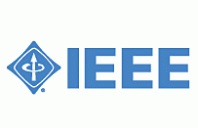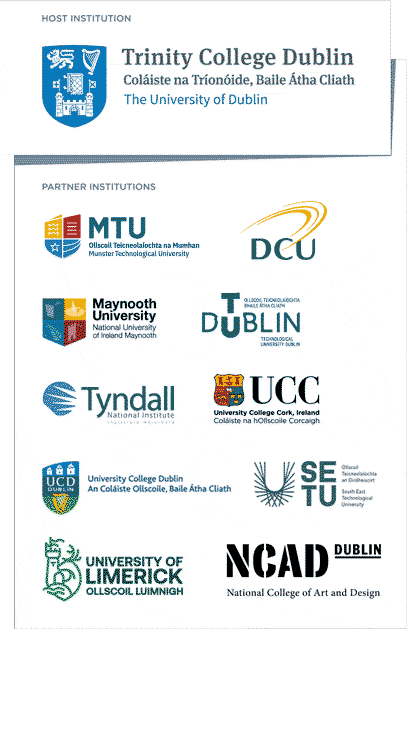Here are some high-impact publications from CONNECT’s researchers…
Title: 5G NR-V2X: Toward Connected and Cooperative Autonomous Driving
Authors:Hamidreza Bagheri, Md Noor-A-Rahim, Zilong Liu, Haeyoung Lee, Dirk Pesch, Klaus Moessner and Pei Xiao
Journal: IEEE Communications Standards Magazine
What’s this paper about?
The fifth generation (5G) mobile communication system has been touted as a key enabling technology for the genuine realization of autonomous driving. While research on 5G is progressing rapidly, a systematic overview on the role of 5G in future vehicular networks is missing. To fill this gap and to spark future research, this article introduces the key technology components of 5G to enable future connected and cooperative autonomous driving.
What have you discovered?
The advanced features (e.g., highly reliable, low latency, and highly scalable connectivity) of 5G will be a game-changer in opening the door to new opportunities, services, applications, and a wide range of use cases in autonomous vehicles. There are however some challenges that need to be resolved before autonomous driving enabled by 5G can be fully realized. This article presents and analyses a number of such challenges, such as rapidly varying vehicular environments due to vehicle mobility increasing the system design complexity for an end-to-end network. For the design of vehicular networks in such a dynamic environment, machine learning can be an extremely useful tool.
So what?
With its enormous potential, 5G is expected to be a transformative technology for fully connected vehicular networks. Researchers will benefit from this work in gaining insight into 5G-based vehicular networks, challenges, and future directions to advance the research in autonomous driving.
Read the full paper here (pdf).
Title: Thermoreflectance Imaging of Semiconductor Lasers With a Numerical Thermal Model
Authors: IEEE Journal of Selected Topics in Quantum Electronics ( Volume: 28, Issue: 1, Jan.-Feb. 2022)
Journal:Robert McKenna, Simon Corbett, Sepideh T. Naimi, Dovydas Mickus, David McCloskey, and John F. Donegan
What’s this paper about?
Semiconductor laser power the internet carrying vast quantities of data each day. These devices operate in a range of environments in which their temperature can vary dramatically. The energy efficiency of such devices will be a major focus in the coming decade where millions of such devices will be used in data centres for example.
What have you discovered?
We have developed a novel imaging technique that allows us to map out the temperature profile in such devices. We can now profile the temperature in such lasers with sub-micron precision and see how changes in ambient temperature and in the power to the laser affects the temperature profile. This paper was published in a special issue of this journal dedicated to Semiconductor Laser d`evices.
So what?
The energy requirements of the internet are growing at an alarming rate and much be tackled. This means improved efficiency right down to the device level. The temperature maps we now have allow us to operate these lasers in a new way that will reduce their energy needs. This result will find impact in all areas of communications in which semiconductor lasers are utilized.
Read the full paper here (pdf).
Title: Combine and Conquer: Simultaneous Transmission Over Multiband Multi-Hop WLAN Systems.
Authors: Asad Ali
Journal: IEEE Access
What’s this paper about?
To improve the performance of the relay networks as well as traditional one-hop wireless local area networks, we proposed simultaneous transmission over multiple bands.
What have you discovered?
We discovered that without proper scheduling, multi-band systems lead to packets arriving out-of-order at the receiver’s end, thus deteriorating the throughput and causing packet reordering delay. Proper capacity utilization from three different bands is a challenging task too. Faced with these challenges, we developed mixed integer linear program and developed a traffic scheduling algorithm that avoids packet reordering delay and optimizes capacity utilization of three bands simultaneously.
So what?
With the developed technique, the end-to-end delay is minimized and throughput is maximized. The network capacity is improved manifold to support future bandwidth hungry applications and to make up for the low performance of the relay networks.
Read the full paper here (pdf)
Title: Real-Time QoT Estimation through SDN Control Plane Monitoring Evaluated in Mininet-Optical
Authors: Alan A. Díaz-Montiel, Bob Lantz, Jiakai Yu, Daniel Kilper, Marco Ruffini
Journal: IEEE Photonics Technology Letters
What’s this paper about?
The paper is about at the concept of using software to emulate optical networks, thus enabling development and testing of software for control of optical networks. The paper also presents the open source tool that we have developed, called Mininet-optical, which is based on a popular Software Defined Network (SDN) emulator (Mininet).
The tool emulates the behaviour of an optical network, in software, and responds in real time to the control commands sent by the user as part of their network control software. In the paper we also provide a use case on how the tool was used to analyse how the quality of a signal changes when propagating through a large-scale optical network.
What have you discovered?
This is the first time that such an optical emulator concept is developed, tested and showcased. In addition, through the use of the tool for analysing networking scenarios, we could compare the performance of different algorithms for quality of transmission estimation. We showed for example the correlation between the number and the type of signal monitoring devices deployed on a network and the quantitative improvement they can provide in estimation accuracy. In addition, we could also develop and test the algorithm’s communications interface with the network devices, showing that our algorithms could in principle be implemented also over a real optical network testbed.
So what?
This is very timely as today optical network are moving from being closed systems (where optical devices can only be controlled by software written by the company that makes the device) towards open system. Open systems allow anyone to write control software for the network and add more programmability, borrowing from other areas in computer science (i.e., optimisation, machine learning, etc.).
So it is important to also provide a software tool that is open source and can be used by anyone to accelerate development and testing, especially at large scales, which is difficult to cover through hardware testbeds.
We envisage this will increase considerably the number of researchers that can enter this novel and growing field of intelligent control of open optical networks and lead to faster development of research and commercialisation solutions.
Title: Survey on Network Slicing for Internet of Things Realization in 5G Networks
Authors: Shalitha Wijethilaka, Madhusanka Liyanage
Journal: IEEE Communications Surveys & Tutorials
What’s this paper about?
Network slicing is one of the predominant technologies in future networks, which divides the physical network into multiple logical networks, known as network slices, to provide application-specific network requirements. The rapid expansion of Internet of Things (IoT) in a myriad of applications intensifies an evolutionary change in telecommunication networks to accomplish their network requirements. This paper discusses how network slicing supports this evolution.
What have you discovered?
Network slicing supports to achieve several technical aspects related to IoT. Increased scalability, improved dynamicity, high security and privacy, End-to-End (E2E) orchestration, improved Quality of Service, and increased resource utilization and prioritization have been identified as the technical aspects that can be improved by network slicing in the IoT domain.
Network slicing utilization in heterogeneous IoT applications has been discovered along with independent network slices in each application with corresponding network properties.
Furthermore, several technical challenges can be originated due to the IoT expansion in the network slicing ecosystem. The paper investigates such major challenges: scalability, adaptive service function chaining, recursion, E2E management & orchestration, security, and privacy.
So what?
A comprehensive analysis of network slicing utilization in the IoT ecosystem has been presented. This paper is a one-stop platform for researchers who engage in network slicing and IoT domain. Several future research directions have been introduced to mature this domain.
Read the full paper here (pdf).
CONNECT is the world leading Science Foundation Ireland Research Centre for Future Networks and Communications. CONNECT is funded under the Science Foundation Ireland Research Centres Programme and is co-funded under the European Regional Development Fund. We engage with over 35 companies including large multinationals, SMEs and start-ups. CONNECT brings together world-class expertise from ten Irish academic institutes to create a one-stop-shop for telecommunications research, development and innovation.
Research Highlights





